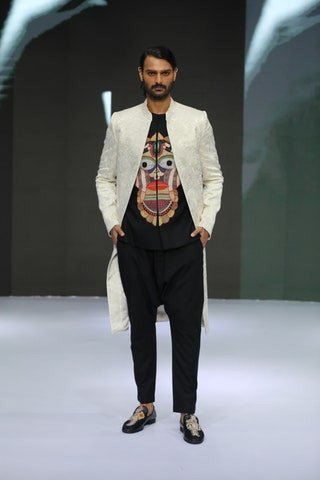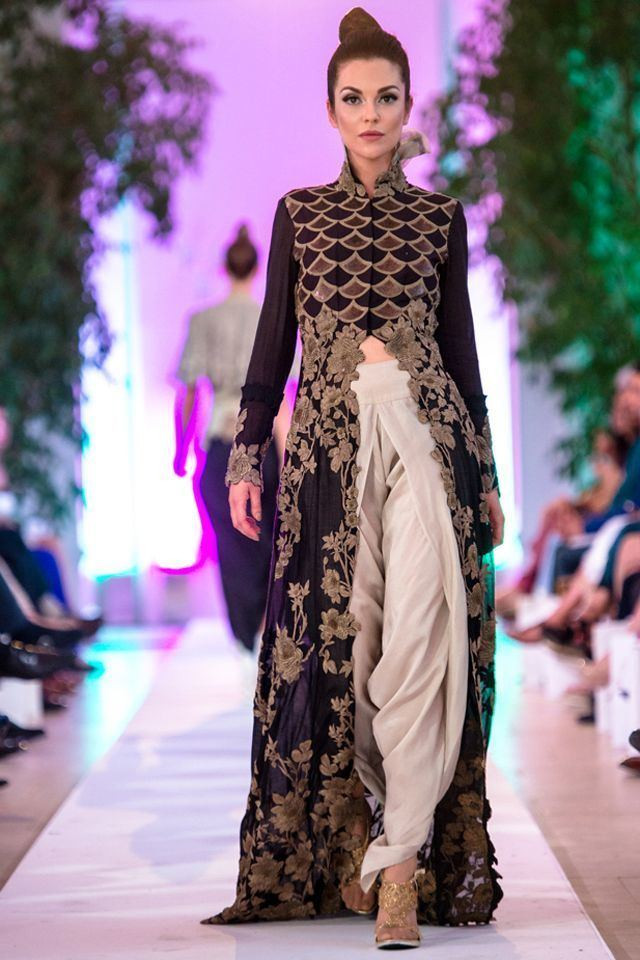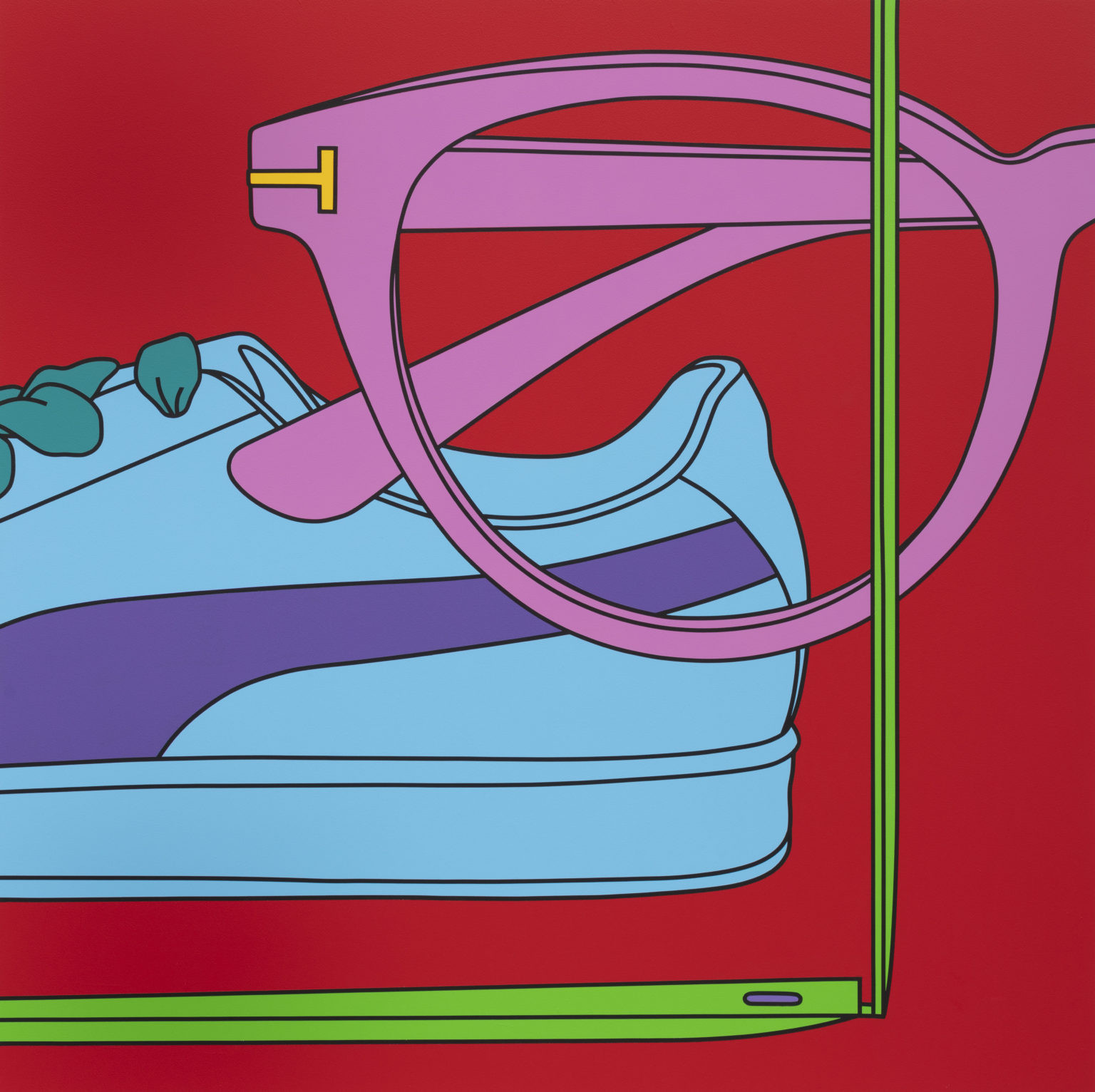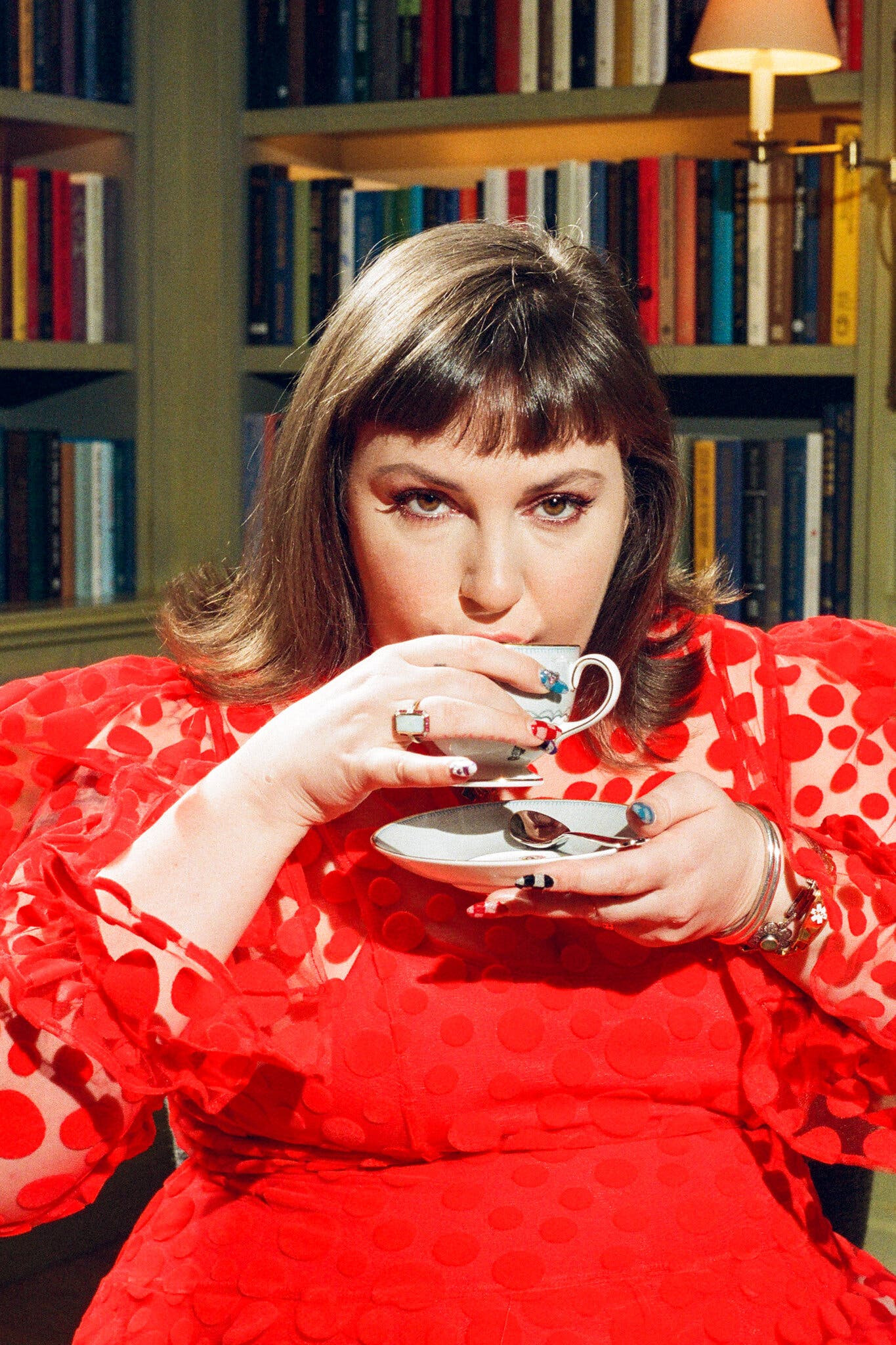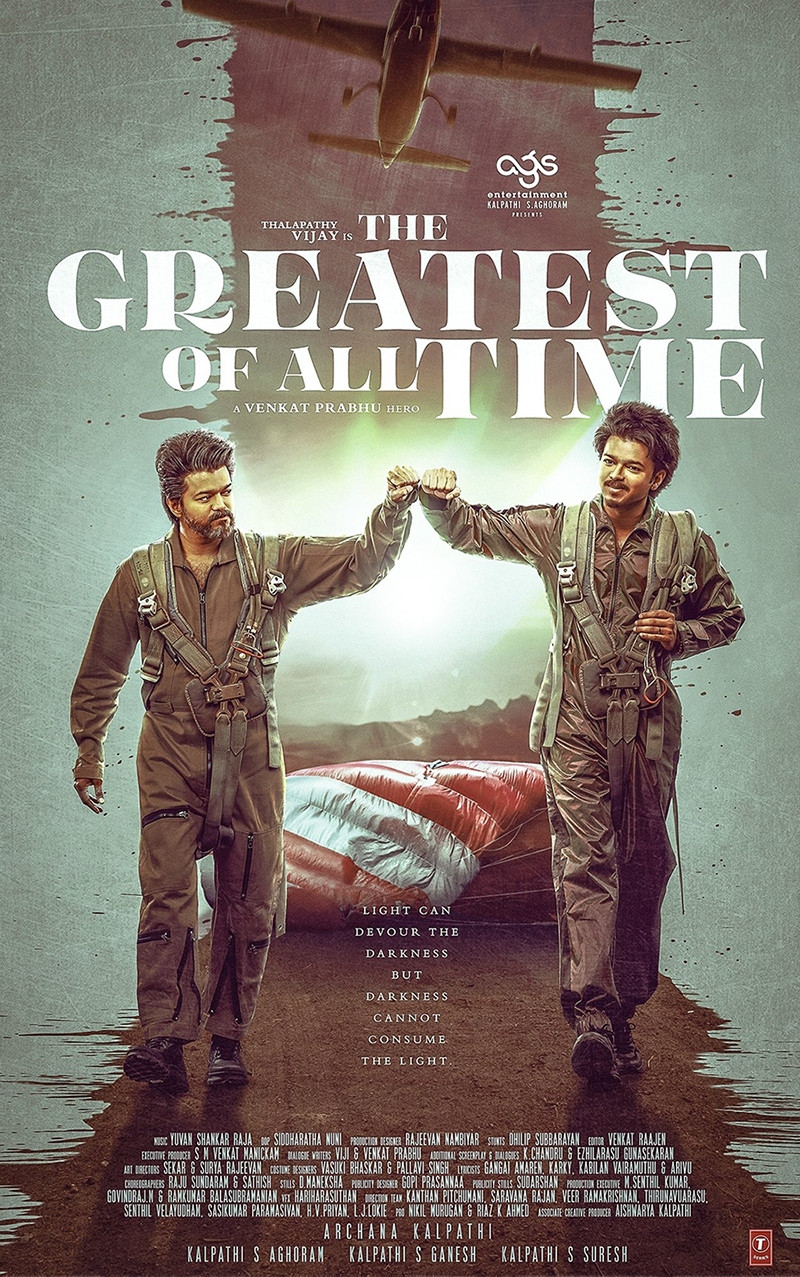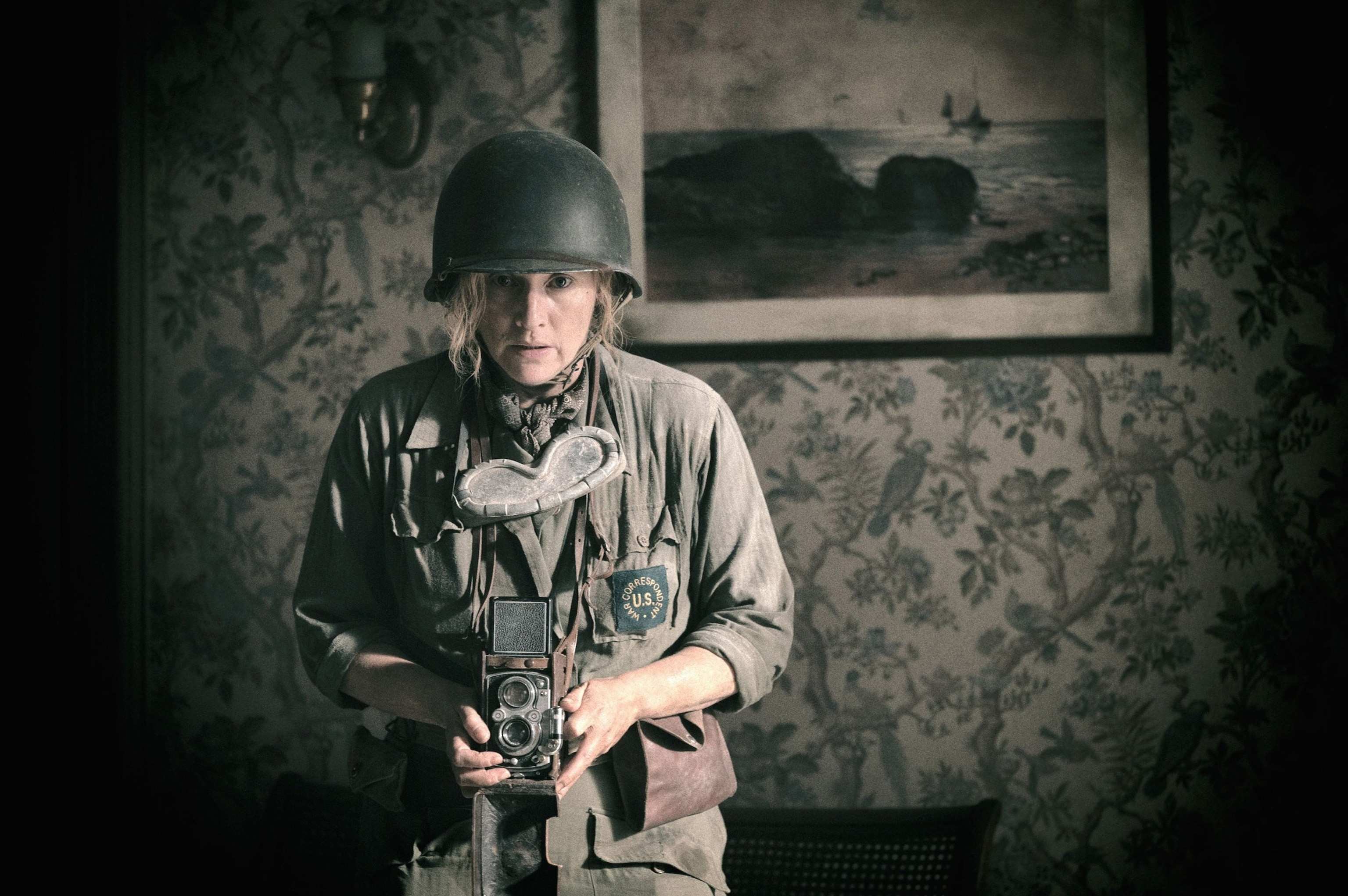H&M's annual designer collaborations are always sure to cause a stir amongst shoppers on launch day and today is no different. Indian designer Anamika Khanna has officially launched her collaboration with H&M, bringing the beadwork and glamour she's renowned for available to high street consumers.
From Jimmy Choo to Paco Rabanne, H&M has collaborated with some of the most sought-after luxury brands of the century. First collaborating with Karl Lagerfeld in 2004, the H&M collaborative collections have become sellouts ever since, with shoppers camping outside stores to get their hands on designer pieces for less.
Despite having no formal design training, you launched your fashion label in the 1990s. Can you tell us about your career as a fashion designer and how it all started?
My fashion journey was quite unexpected. I started as a Science student and later switched to Arts, with no formal training in fashion. It all began when my friends encouraged me to submit some sketches for a fashion award. To my surprise, those sketches were selected, and I was suddenly thrust into creating garments for a show—despite never having made a single piece of clothing before. I didn’t even know what a metre of fabric was! But, I won that contest in Kolkata, and things just took off from there.
I think that instead, it allowed for a lot of experimentation and creativity. There was no roadmap, so I just followed my instincts. I started working with local artisans, experimenting with traditional techniques and trying to reimagine them in a way that felt contemporary. I was more focused on exploring what I could do with Indian craftsmanship and textiles, then how I could make it relevant in a modern context.
Looking back, it's all a bit surreal. Everything just kind of happened as I kept doing what I loved, learning along the way, and pushing myself to try new things. I guess I've always been more interested in what’s coming next and in how I can continue to grow and evolve. There’s still so much more to explore and that keeps me going.
You’re known for championing women through your designs. What’s it like being a female designer amongst a sea of male counterparts?
Being a female designer in the fashion industry, predominantly influenced by male counterparts, has indeed been a fascinating journey. Viewing fashion through a woman's lens certainly offers an advantage, as it allows me to connect deeply with the emotions, needs, and physicality of women. This understanding fuels my designs, making them not just aesthetically pleasing but also practical and relevant to women’s everyday lives.
Moreover, the evolving role of women in society today is both heartwarming and inspiring. Women are increasingly vocal and confident in expressing their individual stories, perspectives, and identities. They are eager to show the world who they are, on their terms, which is incredibly empowering. This shift not only enriches the fashion industry but also strengthens the voice of female designers like myself. We bring our unique experiences and insights to our work, advocating for and celebrating the spirit of modern womanhood in every design. This dynamic is a powerful reminder of how fashion isn't just about clothes; it's a platform for expression and empowerment, reflecting the changing tides of societal roles and personal identity.
How did the collaboration with H&M come about and how long has it been in the works?
The collaboration with H&M came about when they approached me with the idea of merging Indian craftsmanship with a global, contemporary aesthetic. It was an exciting opportunity to present Indian fashion in a new light, making it accessible and relevant to a broader audience. The entire process took about 15 months to develop. During this time, we worked closely to ensure that the collection not only reflected the essence of Indian culture but also resonated with the versatility and modernity that H&M offer. It's been a deeply collaborative and enriching experience, blending our unique perspectives into something truly special.
H&M is renowned for its sought-after designer collaborations. Was this always a goal for you?
Collaborating with a global brand like H&M was not something I initially planned for—it kind of evolved naturally. H&M's collaborations with designers are renowned for bringing high fashion to a wider audience, which aligns with my philosophy of making fashion relevant globally. When the opportunity came along, it felt like the perfect platform to expand the reach of Indian craftsmanship and aesthetics, showcasing it in a way that is modern and appealing worldwide. This collaboration has been an exciting chance to push boundaries and take Indian fashion to new heights.
Do you have free reign to design the collection or does the H&M team have input? If so, how much?
In this collaboration with H&M there was a wonderful balance of freedom and cooperative input. While I had considerable creative freedom to design the collection, ensuring it retained my signature style and aesthetic, the H&M team also provided valuable insights, especially on how to scale designs for a global market. Their expertise in logistics, marketing, and sustainability practices was instrumental in bringing the collection to life. This blend of independence in design with collaborative refinement helped shape a collection that stays true to my artistic vision while being accessible and appealing to H&M’s diverse customer base.
Can you describe the collection to our readers?
The collection I designed in collaboration with H&M is a vibrant celebration of Indian aesthetics infused with a modern touch. It reflects a fusion of traditional Indian silhouettes with contemporary styles, aimed at creating versatile, global appeal. You'll find fluid, loungy silhouettes that can transition effortlessly from casual daytime wear to chic evening attire. The collection emphasizes comfort without sacrificing elegance, featuring draped skirts, airy kaftans, and sophisticated sportswear-inspired pieces.
Colour plays a pivotal role, with a palette that includes both bold and subtle hues, creating a dynamic visual impact. The prints are a mix of new designs and reinterpreted motifs from our archives, blending traditional Indian patterns with graphic elements for a fresh, modern look. Additionally, the collection includes meticulously crafted accessories that complement the clothing, with statement jewellery pieces that embody a mix of eclectic and refined styles.
This collaboration is about bringing a piece of Indian culture to the global fashion scene, reimagined through contemporary design and universal wearability.
What is the price range?
The price range for the H&M collaboration with Anamika Khanna is designed to be accessible while reflecting the quality and uniqueness of the collection. Prices for simpler or smaller pieces start at around £37, making them accessible yet reflective of the detailed craftsmanship. For more intricate designs, prices can go up to £250. This pricing strategy aims to accommodate a wide range of customers, ensuring there is something for everyone in this special collection.
How do you infuse the glamour and craftmanship you’re known for into the collection and yet make it at high street prices? Is this why you took the more graphic route?
Integrating my signature glamour and craftsmanship into a collection for H&M’s dynamic young audience—those just beginning their careers or still navigating university life—presents a delightful challenge. The essence of this collaboration lies in our innovative approach: we opted for graphic designs as a sophisticated yet practical solution. This strategy allows us to emulate the intricate textures and luxurious detailing my work is known for, yet at a price point that respects the budgets of our youthful clientele. It's about crafting an aura of luxury that's both accessible and appealing—providing a touch of sophistication without the steep cost. In essence, we’re creating everyday elegance that fits both the lifestyle and budget of the modern young adult.
You mentioned that you “felt Indian fashion gets lost when interpreted by the rest of the world”, how have you adapted styles to appeal to the broader market? What was your inspiration?
Indeed, my concern has often been that traditional Indian fashion can sometimes be misunderstood globally, perceived perhaps as too ornate or specific for everyday wear outside its cultural context. To address this, I've focused on reimagining and streamlining traditional Indian garments to make them more relatable to a global audience.
My approach involves deconstructing classic styles, and then reconstructing them with a modern twist. This means simplifying the silhouettes, integrating elements like asymmetry, and using draping techniques that maintain the essence of the traditional but with a contemporary ease of wear.
The inspiration comes from a desire to create a bridge between the rich heritage of Indian textiles and embroidery and the global fashion scene's minimalist trends. By doing so, the collection aims to resonate with people internationally, presenting Indian fashion not just as occasional wear but as a versatile, everyday choice that holds a sense of global appeal.
The collection, which features everything from elevated basics to her signature draped skirts, airy kaftans, and intricate beading, is unmistakably Khanna. Despite its global appeal, the collection remains deeply rooted in Indian sensibilities, a balance that Khanna achieved through a thoughtful and deliberate design process. “We began by setting the parameters—quality, pricing, silhouettes, and the story we wanted to tell. Once those were in place, we worked backwards to ensure the collection would reflect my design ethos while remaining accessible. It was a collaborative process with a lot of fine-tuning along the way,” she explains.
Having been in the works for over a year, this collaboration is an extension of Khanna’s already established design aesthetic, including her couture line and ready-to-wear label, AK-OK. With this collection, Anamika Khanna and H&M have not only paid homage to Indian craftsmanship but have also set a new standard for how traditional and modern elements can be harmoniously blended to create something truly timeless.The collection will be available to shop in selected stores and online on September 5th.
Growing up, I hated wearing what I always referred to as ‘Indian clothes’. Every time there was a family wedding or religious celebration, out would come the lehengas, with their scratchy chiffon skirts and polyester tops, or sarees I could barely move in.
But the worst part was that I never really felt – or looked – like myself in Indian clothes. They were so different to the 00s British fashion I was obsessed with (think spaghetti strap tops, hipster jeans and giant hoodies) that I always felt the split in my wardrobe symbolised the internal split I felt in myself as a brown girl born in Britain.
It’s why I was so intrigued to hear about H&M’s latest collaboration with Indian designer Anamika Khanna. H&M is one of the high-street brands I spent endless weekends in as a teen, but it’s not somewhere I necessarily saw my Indian identity represented. While Anamika Khanna is famous for dressing Bollywood royalty like Priyanka Chopra and Deepika Padukone in her modernised takes on traditional Indian clothing.
How would the two work together? And how would I feel wearing them? Even though I’m now proud to be a British Indian woman, especially a creative who writes about fashion, my wardrobe is still split in two: Indian outfits for ceremonial wear, and everything else for daily wear. Where would H&M x Anamika Khanna fit in?
I had no idea what to expect when I went to H&M’s showroom to try on the collection, but I instantly recognised the choli-style blouses and lehenga-inspired skirts from my Indian wardrobe. At the same time, I saw the cropped tops, high-waisted skirts and athleisure-inspired cuts that are ubiquitous on the UK high street – and the other side of my wardrobe.
Because Khanna’s collection isn’t just one thing. It’s a mix of Indian fabrics and textures along with westernised cuts. There are flowing kaftans and skirts reminiscent of sarees, along with hoodies, blazers and baseball caps.
I loved playing with the styles, pairing a long silk skirt with an oversized T-shirt, then adding a silk jacket to dress it up. Or a cropped floral blouse with a high-waisted monochrome skirt splashed with colourful patterns, all with a flowing jacket in the same mulberry silk. It’s fun, unique and I have no idea what ‘side’ of my wardrobe it would fit into, which is refreshing.
The items that do feel recognisably ‘Indian’ to me have all the elements of Indian fashion I always loved – bright colours that suit my complexion, bold patterns and silky textures – but they’ve all been updated with clean, modern cuts, with several unisex items.
Her emerald-green silk suit looks like an Indian-inspired version of something I already own. Then there’s a statement boucle jacket with a cut-out black skirt, and plenty of saree-esque blouses.
Unlike the scratchy Indian clothes I was forced into as a teenager, these are joyously comfortable. There are oversized silk pyjama-style sets, cleverly placed zips that don’t dig in, and soft fabrics that drape in the right places.
To my surprise, the outfit I love the most is the most recognisably Indian, with its sleeved cropped top and full high-waisted skirt in white with black, yellow and green designs. I could easily wear it to a Diwali party – but I also want to wear it to my next book launch. Because this outfit makes me feel exactly like myself. For once, I don’t feel like I have to choose which side of heritage to represent through fashion, because Khanna’s collection blends them together.
That was exactly her goal. She tells Cosmo she wants the collection to be ‘worn by anyone who appreciates a blend of tradition and modernity, regardless of their background.’ To her, this was the ‘perfect platform to push the boundaries of how Indian design elements can be interpreted in a mainstream fashion arena, making them more approachable for a diverse audience.’
It's a cultural milestone in that it’s one of the first times a major high-street brand has brought Indian-inspired fashion into the global market. H&M has recently collaborated with brands like Sonia Rykiel, Rokh and Rabanne, and Khanna hopes hers ‘will alter the global perception of Indian fashion, showcasing its versatility beyond traditional wear and highlighting its potential in everyday, modern wardrobes.’
She wants to show that Indian fashion doesn’t need to be ‘confined to ethnic or ceremonial wear’. Instead, her goal is to ‘create a bridge between cultural heritage and current global fashion trends.’
That’s exactly what she’s done. With H&M x Anamika Khanna, I feel like my culture as a British Indian woman is being fully represented on the high-street for the first time. It bridges together the two sides of my wardrobe – the two sides of my identity – and I can’t wait to see other women wearing it.




